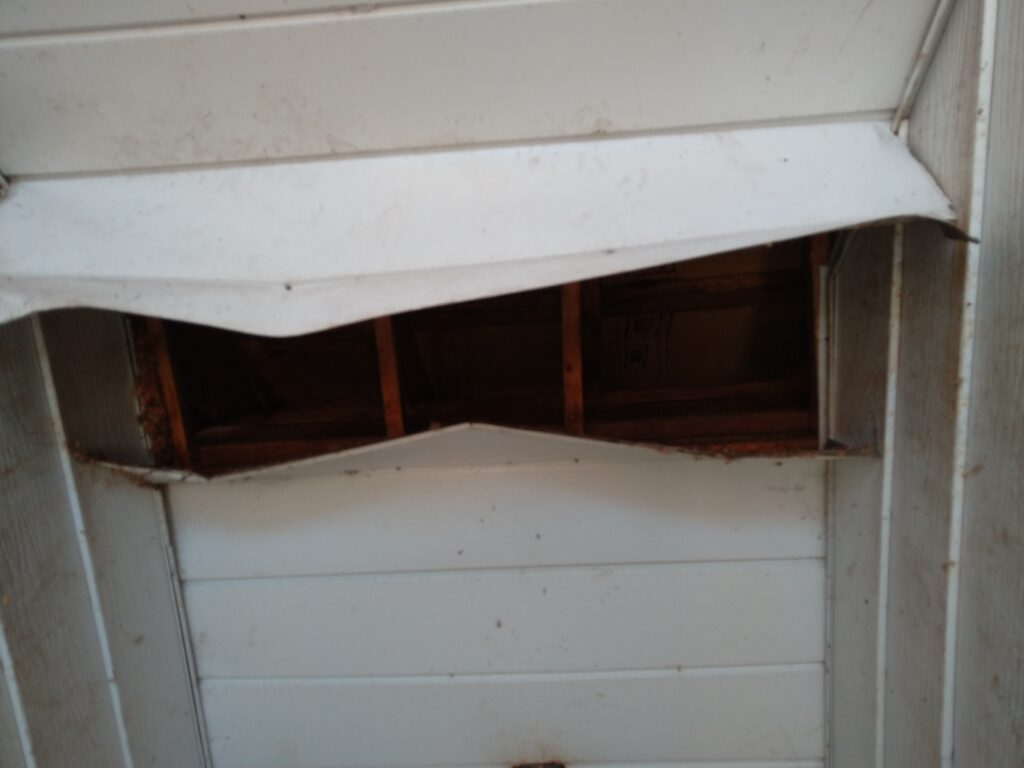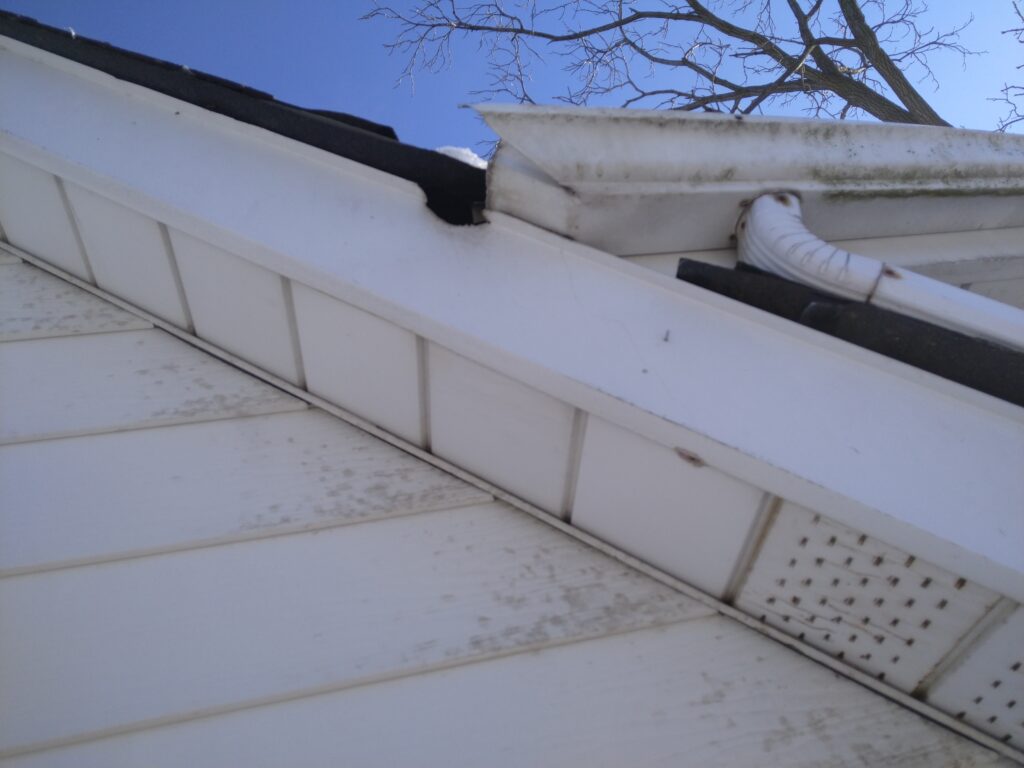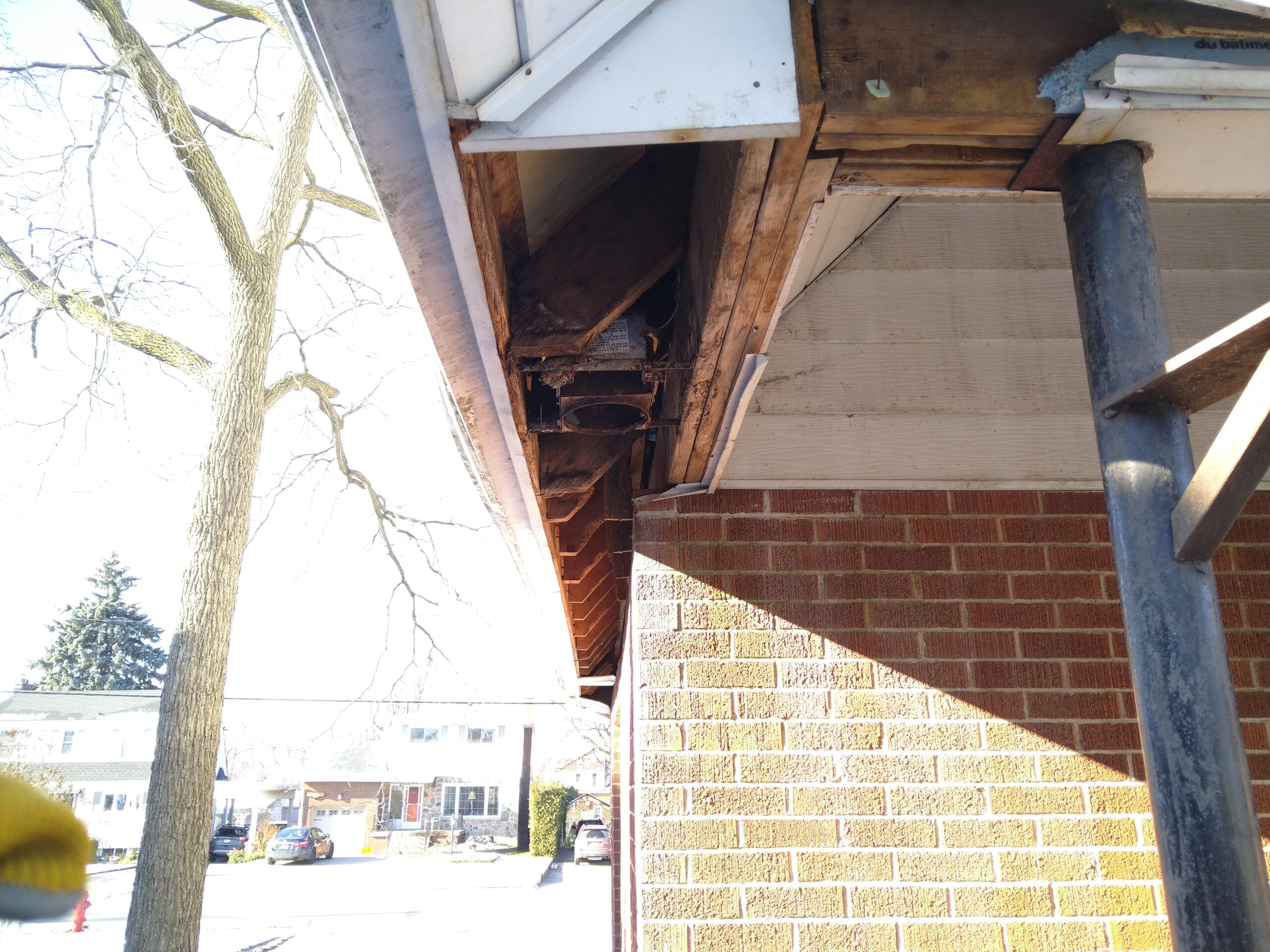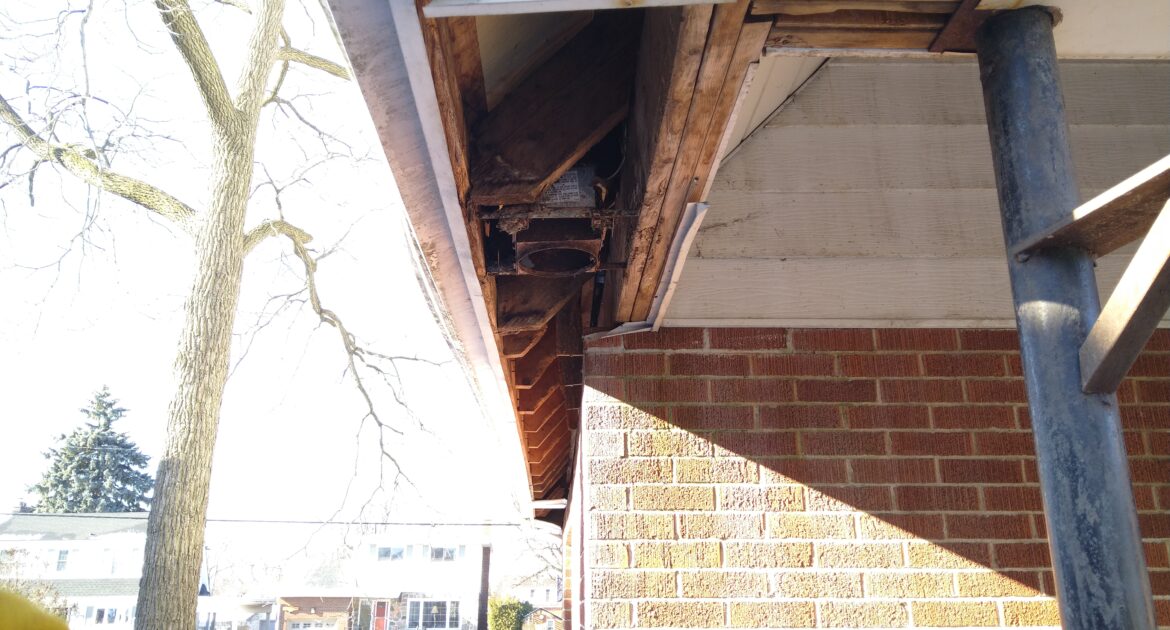When most people think about wild animals that can adapt to live near towns and cities, they often think each species stays away from one another in separate den sites. However, as this job showcases, multiple wildlife species can create their den in the same location if the opportunity is there. Mammals, in particular, have no qualms about entering a home or even sharing it with another wildlife species, as was the case for this homeowner in Stoney Creek. As long as there is enough space for both species to create their den, they are able to share a home – creating a significant amount of damage in the meantime.
In this blog, we share a wildlife removal job one of our technicians Nicholas Van Kralingen was called to in an area with older homes and a strong growing tree population.
Discovering the Wildlife
This home was recently purchased to be renovated into a triplex however upon inspection there were multiple wildlife entry points. Our Skedaddle Humane Wildlife Control technicians experienced this surprising event firsthand when the homeowner called them out to inspect the residence and realized both squirrels and raccoons were taking up residence in the home. Since attic spaces and wall cavities provide a variety of separate locations inside a home, different wildlife species can coexist without encroaching on each other den site.
In order to be in accordance with health and safety laws the wildlife has to be removed humanely and efficiently in order to begin the renting process. The client had to postpone the renovation while Skedaddle got to work on the removal and clean-up process.
Identifying Invading Wildlife
While the client noticed several different wildlife entry points, he was not sure what type of animals had made their way into the building. Our wildlife techs assessed the property upon arrival and noticed that the appearance of several points was quite different. Some building materials looked as though the animal had pried them up or pulled them free of the building’s exterior to gain entrance, while others had noticeable gnaw marks that indicated a type of rodent at work.
After reviewing each of the entry points, our technicians concluded that both squirrels and raccoons were sharing the building because of the differences in how each mammal entered the building. Food smells and other scents likely attracted one mammal after the other began to nest there. Once the client agreed to removal services, our wildlife removal specialists prepared for the next steps in mitigation.
Although squirrels and raccoons are not known to den together, wildlife often shares a den site out of convenience. The scent of one species may attract another to the home, and the presence of entry points may also allow future wildlife to join them. Although the squirrel had chewed their own holes to enter, they were also able to use the holes created by raccoons to come and go. Immediate action to remove wildlife from a home is the best way to prevent more from joining.


Humane Wildlife Removal Begins
Our technicians began the removal process by ensuring the building’s unwelcome raccoon guests were not raising a family in the walls or in the attic. Fortunately, they found only adults and installed one-way doors that allowed the animals to leave but not return. They also installed a smaller one-way door so that the squirrel population inside the building would not have access back inside once they left to forage for food, allowing our techs to practice humane squirrel removal.
Once our techs installed these doors, they also helped our client protect his investment for the future by installing screens and protecting plumbing mats, soffits, and roof vents so that wildlife could not use these entry points to regain access. These screens and other materials our technicians added around the home provide long-lasting protection against rain, snow and wind as well as clever raccoon hands and the gnawing teeth of a squirrel. The client was then able to complete repairs and renovations on his own to prepare the building for occupancy.
Protecting a Lifelong Investment
Our wildlife removal technicians understand that when people call them in for help, one of the main reasons they do so is to protect their best interests in a property they invested in. Since the client hoped to renovate the building and rent out three different units, the presence of either a squirrel or raccoon family could harm that investment in several ways, including:
- Overextending a repair budget due to wildlife damage
- Extended renovation time
- A loss of income due to rental delays
Our wildlife removal techs knew they had to act quickly to help our client protect his investment in the building. The sooner the animals were removed, the less damage would be created, and more time would be given to the homeowner to prepare for their future renters. Professional removal is also crucial to remove any wildlife attractant that could entice other species of wildlife in the future. Skedaddle technicians use a professional decontamination process to ensure that all traces and smells of the wildlife are gone. Every single entry point is then sealed with high-quality materials to make sure that no species of wildlife can return in the future.
At Skedaddle Humane Wildlife Control, we understand that investing in property is often a life-long commitment. Contact us today for a variety of services and let us help you protect your investment against the many kinds of adaptable animals that may decide to make it their own.




